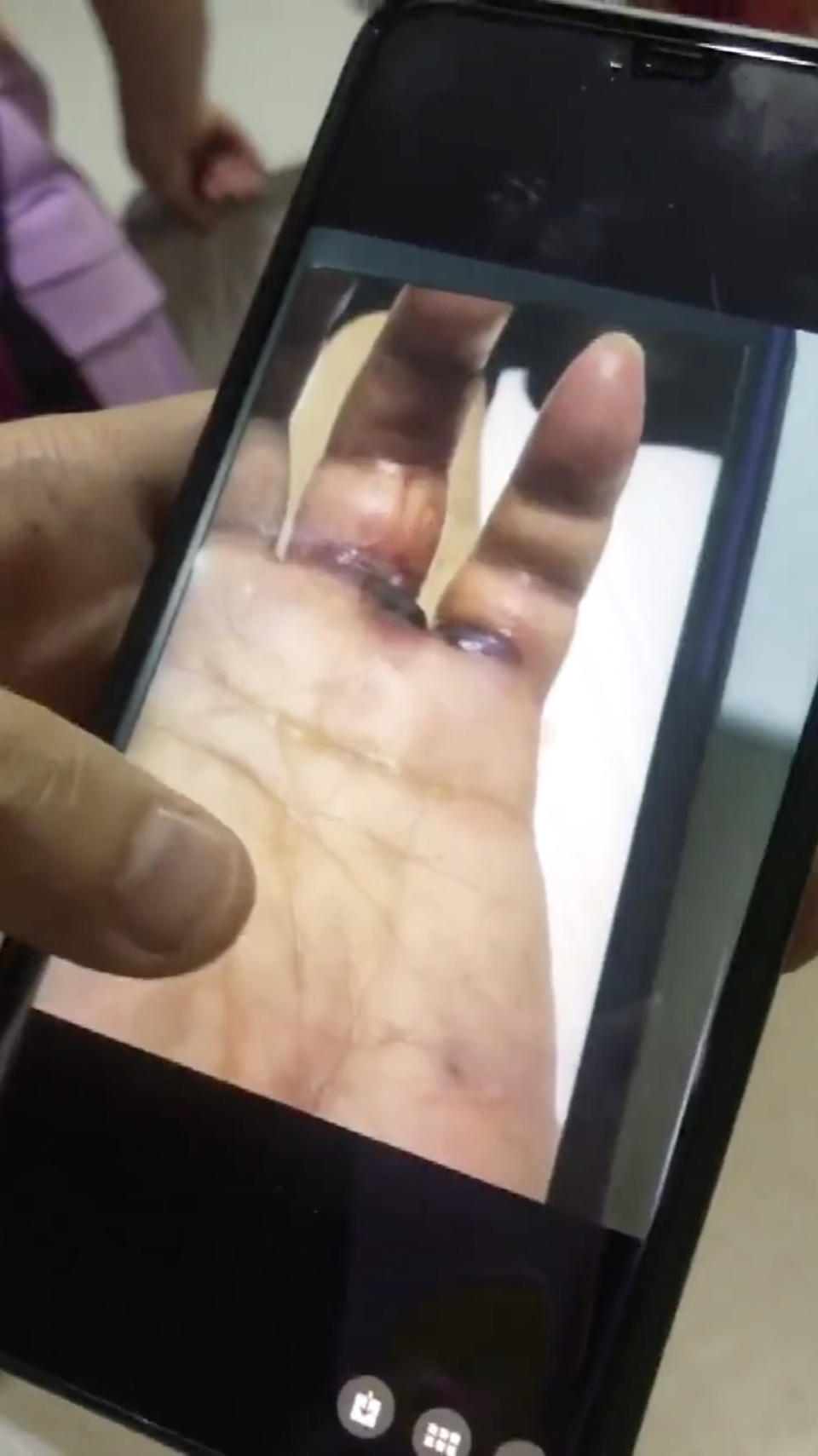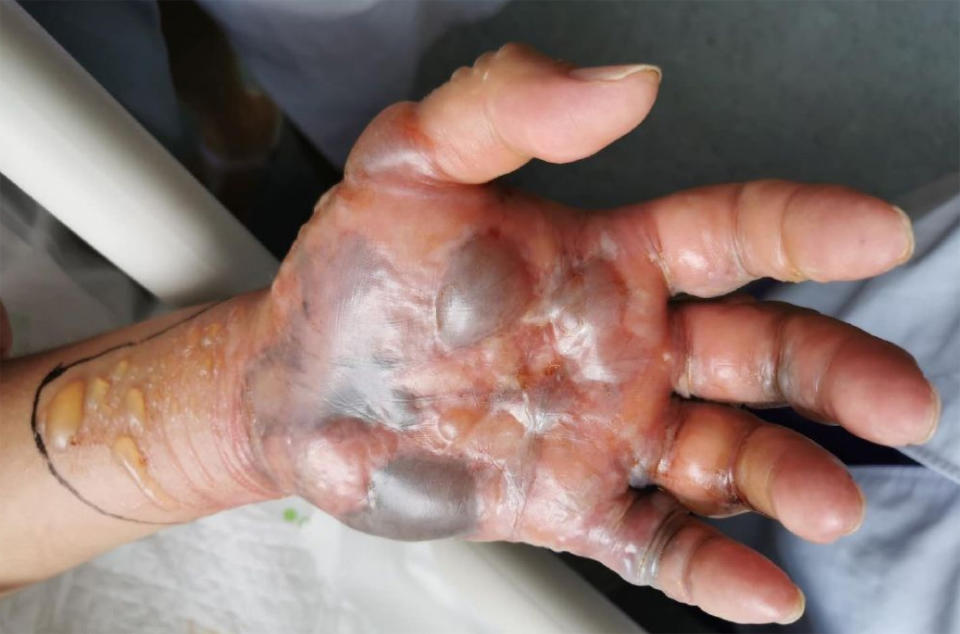Fisherman contracts deadly flesh-eating disease after simple task
WARNING - GRAPHIC IMAGES: A fisherman has contracted a deadly flesh-eating disease after washing a fish without gloves.
Mr Wang, from Guiyang in south-western China, pricked his hand on the spine of a Japanese sea bass between his left ring and little fingers while preparing it for dinner on July 17.
The 60-year-old told Guiyang Evening Post the fish spine neither drew blood nor left a visible wound, so he paid no attention to it and finished his dinner.
However, just three days later, he ended up in intensive care at Guizhou Provincial People’s Hospital and now faces amputation due to a rapidly spreading disease caused by the marine bacteria Vibrio vulnificus, the hospital said.

“I love eating fish, especially bass. On 17th July, I was cleaning the insides of the fish when I pricked my hand between my fingers,” Mr Wang told the paper.
“I didn’t think anything of it because this has happened hundreds of times before.
“The next morning it started swelling. I applied some topical ointment to it, but it only worsened in the afternoon, so I went to the doctors."
The pathogen present in brackish water is believed to have entered his skin from the tiny spine prick, causing a flesh-eating disease known as necrotising fasciitis.
Hospital images show Mr Wang’s left hand covered in festering and blistering skin lesions as his palm and fingers begin swelling and turning black.
Dad struck and killed by car while helping a woman outside Aldi
'UNACCEPTABLE!' Couple find melted disposable glove in takeaway pasta dish
“Mr Wang arrived on 20th July after staying in another hospital’s dermatology department for two to three days,” ICU medic Doctor Dong said, according to a local paper.
“He suffered some slight swelling in his fingers. They thought it was some type of skin condition, but his condition worsened.
“After the doctors learned he had come in contact with fish, they suspected Vibrio vulnificus, which has a high mortality rate, so they transferred him here.”
Swelling in Mr Wang’s left hand spread up his entire arm and he was placed on an urgent course of antibiotics.
His left arm improved after treatment, but swelling and lesions on his hand continued to worsen until he lost sensation, Doctor Dong told the newspaper.
Mr Wang’s hand had to be cut open in order to drain pus and fluids building up in his palm. He is now able to move his fingers but he is not yet in stable condition.

Doctor Dong said Mr Wang could face either the amputation of his entire left hand if necrosis continues, or they could preserve his hand and digits while retaining only partial fine motor skills.
“Between 50 and 70 percent of patients suffering from Vibrio vulnificus die within 48 hours,” he said.
“Many infected patients have amputations or die, so he can consider himself lucky so far.”
According to the United States’ Centers for Disease Control and Prevention, one in five people with the infection die within a day or two of falling ill.
“In the first two days, it hurt so much I wanted to die. Thankfully, after treatment in intensive care, I’m now able to move my hand a little,” Mr Wang said.
Doctor Dong said over 95 percent of the world’s deadly Vibrio pathogens exist in tropical Asia, mostly in estuaries and other coastal areas.
The bacteria is present in fish and shellfish, including oysters.
Australscope
Do you have a story tip? Email: newsroomau@yahoonews.com.
You can also follow us on Facebook, Instagram and Twitter and download the Yahoo News app from the App Store or Google Play.

 Yahoo Finance
Yahoo Finance 
